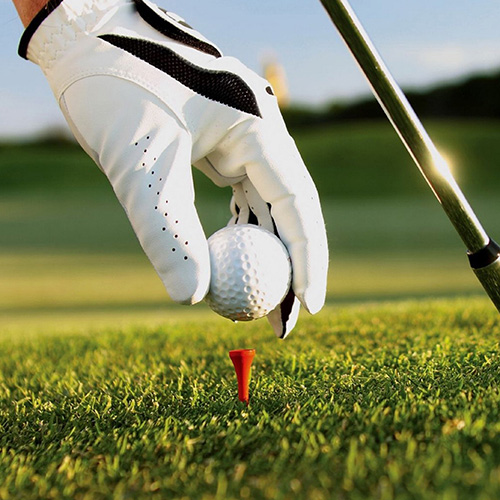A Digest to Golf Course Etiquette

The PGA Tour reported approximately one in seven Americans played golf in 2022. That’s a 20% increase from 2016, placing millions of new players on golf courses.
Golf etiquette is not intuitive, so it needs to be learned. Here is a beginner’s guide to the most common etiquette scenarios that novice players encounter.
And a reminder to all experienced players, everyone was a beginner at one point and had to learn the rules and etiquette of the sport. Your patience and help will hasten their development.
General Etiquette 101
-
Wear the appropriate attire. Club rules may vary, but in general, wear a collared shirt, khaki shorts/skorts or pants/skirts, and golf shoes. Tank tops, jeans, cargo shorts, and open–toed shoes are inappropriate.
-
Once a player is addressing the ball, remain silent.
-
Never hit up on the group in front of you. If it’s possible to reach them with your shot, wait until they all hit their next shots or putt out.
-
When searching for your ball or traveling to the next hole, never drive in front of tee boxes.
-
If you hit onto another fairway, allow the group playing that hole to hit their shots before playing your shot.
-
Never drive the golf cart on the tee boxes or greens.
-
If you hit a ball that could hit another player on the course, yell “Fore!”
-
Minimize cell phone use.
On the Tee Box
-
Tee your ball up anywhere between and slightly behind the tee box markers.
-
Stand behind the player hitting, diagonally to the left or right. Don’t stand directly behind or to the side of them to avoid distraction.
-
If you hit a poor tee shot that is in play, play that shot. Don’t hit a second tee shot. Only hit a “provisional” tee shot if your first might be lost or out of bounds.
-
After you’ve hit your tee shot, remain in the tee box area and to avoid noisy distractions. Be considerate of those who still have to hit.
-
When your approach a tee box and the group in front is still hitting, stop your cart and keep your distance until they finish. Also, lower the volume if you’re playing music.
From the Fairway
-
The player whose ball is farther from the green hits first. The ball nearest to the green hits last.
-
When players are hitting before you, use that time to gauge distance and club selection so you’re ready to play. This helps keep the pace of play moving.
-
Stand behind or to the side of other players hitting. Don’t position yourself or your cart anywhere between the player hitting and the green.
-
If you can’t find your ball, spend a maximum of three minutes to search. If that time expires, take a penalty stroke and drop the ball in the area it crossed out of bounds.
-
Replace any divots that you create. Either fill the divot with the original turf or use the divot mix from your golf cart to fill the area.
Around the Greens
-
After playing out of a bunker, rake the area of your shot and your footprints.
-
Use a divot repair tool (or tee) to fix divots created by your ball landing on the green.
-
Slide a ball marker beneath the back of your ball and pick the ball up. Return the ball to the front edge of the ball marker when it’s your turn to putt.
-
The player whose ball is farthest from the hole putts first.
-
Avoid walking on players’ putting line — which is the imaginary line between the ball and the hole.
Ask a playing partner for guidance if you’re unsure of proper etiquette. It’s the quickest way to learn and avoid mistakes.
NJM, a leading property and casualty insurer in the Mid–Atlantic region, is proud to partner with the Golf Association of Philadelphia (GAP). Contact your agent or broker, visit njm.com/gap, or call 833-859-1920.



